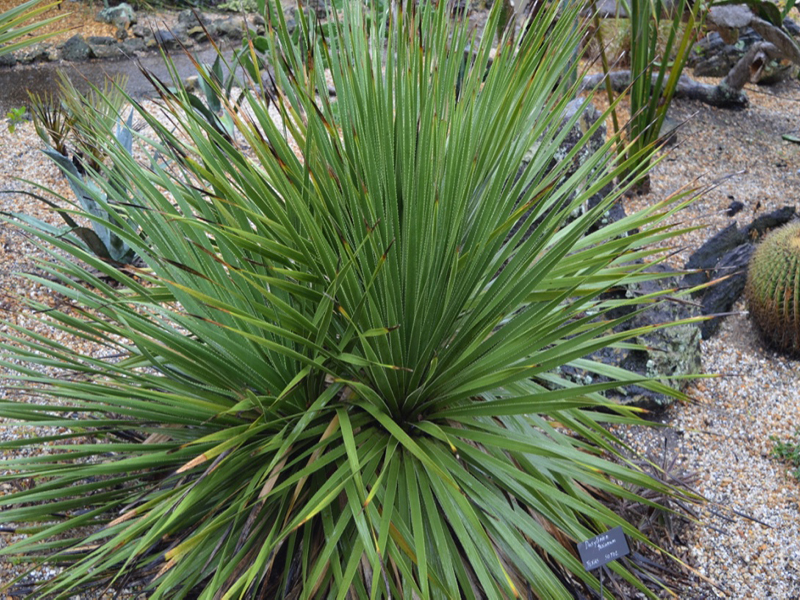
Perennials, Tropicals > Dasylirion > Dasylirion texanum > Dasylirion texanum
Dasylirion texanum
Texas Sotol, Sotol
Origin: Native to central and southwestern Texas and in Coahuila state of northeastern Mexico, including the Chihuahuan Desert.
| Family |
| Asparagaceae |
| Genus |
| Dasylirion |
| Species |
| texanum |
| Category |
| Perennials, Tropicals |
| Type |
| Shrub (evergreen) |
| Synonyms |
| Dasylirion texanum var. aberrans |
| USDA Hardiness Zone |
| 7a to 11b |
| Canadian Hardiness Zone |
| Requires cold season protection under glass. |
| RHS Hardiness Zone |
| H6 - H1c |
| Temperature (°C) |
| (?17.8) - 10 |
| Temperature (°F) |
| 0 - 50 |
Photographs
Description and Growing Information
Flowering Period
| General Description |
| A grass-like plant, typically smaller than other Dasylirions, with light green leaves, a short trunk and spectacular flower stalks up to 4.5 m tall. |
| Landscape |
| These make excellent potted specimens, and their symmetrical form provides a striking focal point. |
| Cultivation |
| Grows best in full sun, but can be grown with some shade and humidity. |
| Growth |
| Slow |
| Habitat |
| Rocky and gravelly desert areas. Open, rocky limestone slopes, arroyos and canyons, and dry limestone hills. |
| Leaf Description |
| Slender individual up to 90 cm long and 1.3 cm wide, spreading from a central trunk that is sometimes partially buried underground. |
| Fruit Description |
| Evergreen foliage. |
| Notable Specimens |
| Harry P. Leu Gardens, Orlando, Florida, United States of America. |
| Ethnobotanical Uses (Disclaimer) |
| The sugary pulp in the centre of the bud can be eaten. Dasylirion was once a major food source in the desert southwest of North America. The buds were roasted in rock-lined pits and pounded into cakes. A potent alcoholic beverage, known as sotol, is distilled from the baked and fermented buds. |
